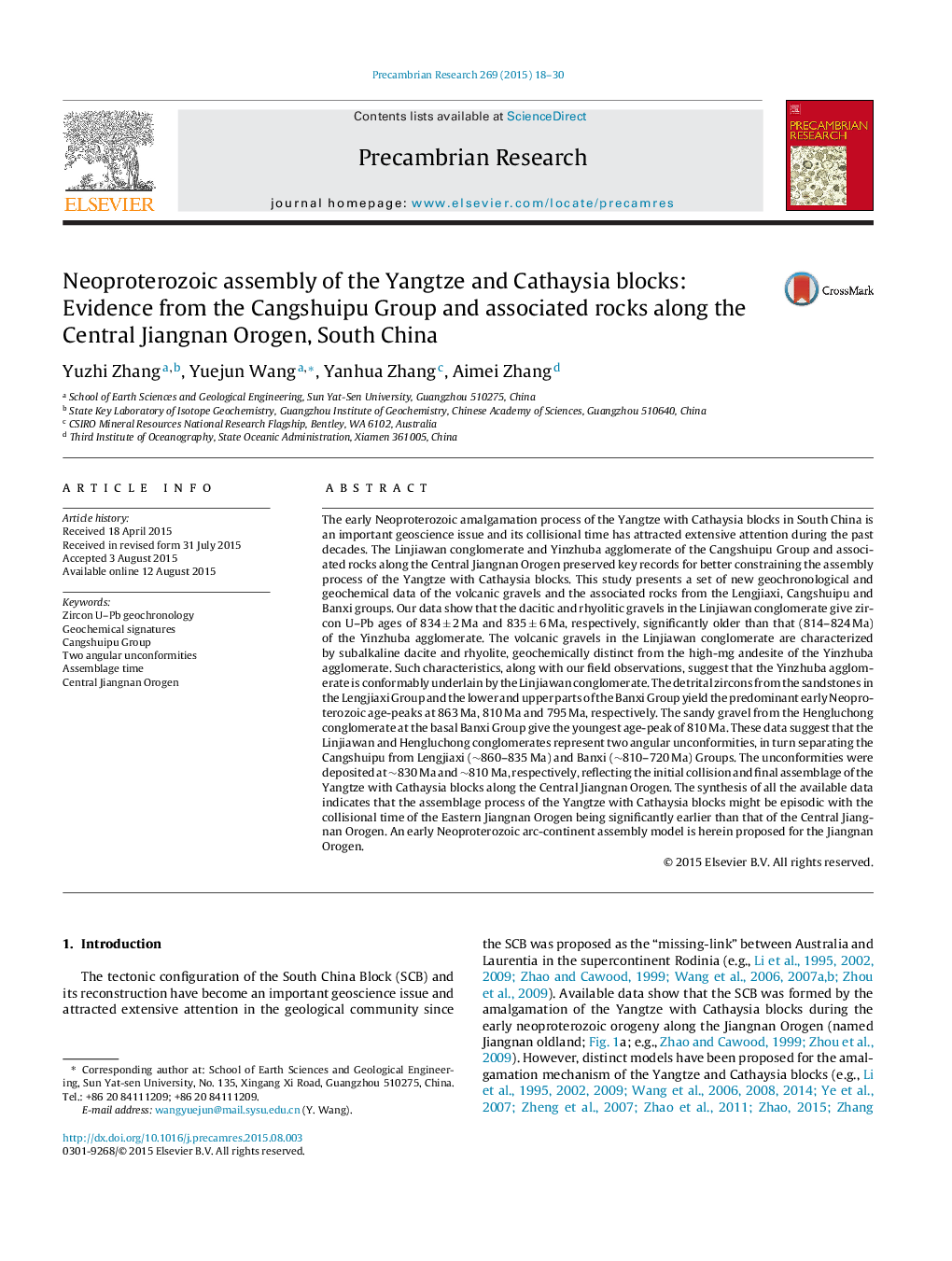| کد مقاله | کد نشریه | سال انتشار | مقاله انگلیسی | نسخه تمام متن |
|---|---|---|---|---|
| 4722567 | 1639606 | 2015 | 13 صفحه PDF | دانلود رایگان |

• The Linjiawan volcanic gravels and Yinzhuba high-mg agglomerate erupted at 834–835 Ma and 824 Ma, respectively.
• The Cangshuipu Group is constituted by the Linjiawan conglomerate and the overlying Yinzhuba agglomerate.
• The Lengjiaxi and Banxi Groups were likely deposited at ∼860–835 Ma and ∼810–720 Ma, respectively.
• The assemblage of the Yangtze with Cathaysia initiated at ∼830 Ma and ended at ∼810 Ma along the central Jiangnan orogen.
• An early neoproterozoic arc-continent assembly model is herein proposed for the Jiangnan orogen.
The early Neoproterozoic amalgamation process of the Yangtze with Cathaysia blocks in South China is an important geoscience issue and its collisional time has attracted extensive attention during the past decades. The Linjiawan conglomerate and Yinzhuba agglomerate of the Cangshuipu Group and associated rocks along the Central Jiangnan Orogen preserved key records for better constraining the assembly process of the Yangtze with Cathaysia blocks. This study presents a set of new geochronological and geochemical data of the volcanic gravels and the associated rocks from the Lengjiaxi, Cangshuipu and Banxi groups. Our data show that the dacitic and rhyolitic gravels in the Linjiawan conglomerate give zircon U–Pb ages of 834 ± 2 Ma and 835 ± 6 Ma, respectively, significantly older than that (814–824 Ma) of the Yinzhuba agglomerate. The volcanic gravels in the Linjiawan conglomerate are characterized by subalkaline dacite and rhyolite, geochemically distinct from the high-mg andesite of the Yinzhuba agglomerate. Such characteristics, along with our field observations, suggest that the Yinzhuba agglomerate is conformably underlain by the Linjiawan conglomerate. The detrital zircons from the sandstones in the Lengjiaxi Group and the lower and upper parts of the Banxi Group yield the predominant early Neoproterozoic age-peaks at 863 Ma, 810 Ma and 795 Ma, respectively. The sandy gravel from the Hengluchong conglomerate at the basal Banxi Group give the youngest age-peak of 810 Ma. These data suggest that the Linjiawan and Hengluchong conglomerates represent two angular unconformities, in turn separating the Cangshuipu from Lengjiaxi (∼860–835 Ma) and Banxi (∼810–720 Ma) Groups. The unconformities were deposited at ∼830 Ma and ∼810 Ma, respectively, reflecting the initial collision and final assemblage of the Yangtze with Cathaysia blocks along the Central Jiangnan Orogen. The synthesis of all the available data indicates that the assemblage process of the Yangtze with Cathaysia blocks might be episodic with the collisional time of the Eastern Jiangnan Orogen being significantly earlier than that of the Central Jiangnan Orogen. An early Neoproterozoic arc-continent assembly model is herein proposed for the Jiangnan Orogen.
Journal: Precambrian Research - Volume 269, October 2015, Pages 18–30